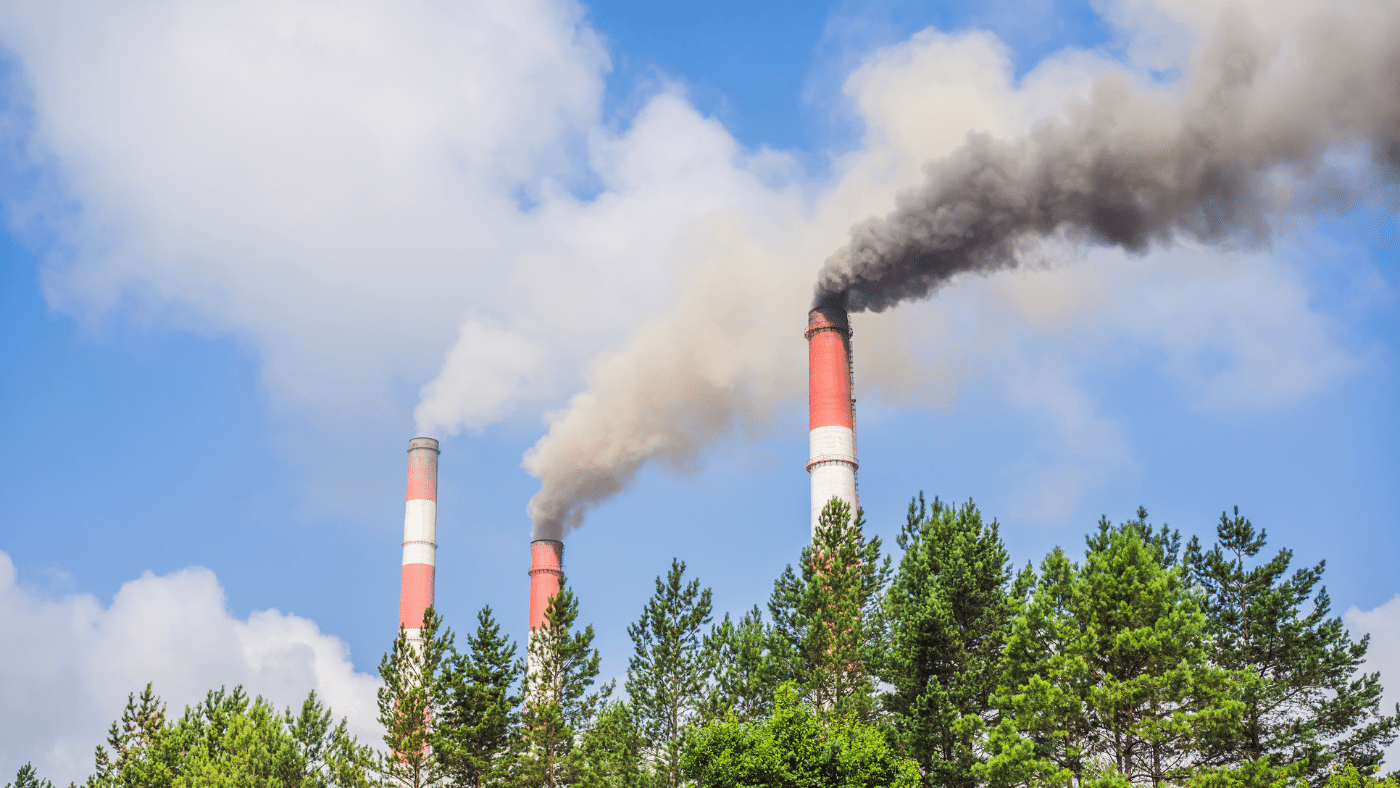Coal Ash: Environmental Concerns and Regulation
What is Coal Ash?
The term coal ash refers to everything that remains after coal is burned. Another term for these remnants of coal combustion is coal combustion residuals (CCR). Coal ash is primarily produced from the burning of coal in coal-fired electrical power plants and includes several by-products produced from burning of the coal, including:
- Fly ash: a very fine (0.5 to 300 micrometers) spherical, powdery material composed mostly of silica made from the burning of finely ground coal in a boiler
- Bottom ash: coarse angular ash particles that are too large to be carried up into smokestacks and form in the bottom of the coal furnace
- Boiler slag: molten bottom ash from slag-tap and cyclone-type furnaces that turns into pellets with a smooth glassy appearance after being cooled with water
- Flue gas desulfurization material: leftover from the process of reducing sulfur dioxide emissions from a coal-fired boiler that can be a wet sludge consisting of calcium sulfite or calcium sulfate or a dry powdered material that is a mixture of sulfites and sulfates
Coal ash is one of the largest types of industrial waste generated in the U.S. According to the American Coal Ash Association, in 2012, 800 million tons of coal was burned by 470 coal-fired electric utilities and 110 million tons of CCRs were generated. In 2013, 14.5 million tons of bottom ash, 53.4 million tons of fly ash, and 35.1 million tons of flue gas desulfurization products were produced. In 2014, over 130 million tons of CCRs were generated. During this period [2012-2014], 50% of CCRs generated was recycled for beneficial reuse, 10% was disposed of in dry land storage (landfills), and 40% was disposed of in wet storage (surface impoundments, ponds, lagoons).
Coal Ash Disposal & Environmental Concerns
Coal ash is disposed of or used in different ways depending on the type of by-product, the processes at the power plant and plant-specific regulations. Some power plants dispose of coal ash in surface impoundments such as coal ash ponds or in landfills, while others may discharge it into a waterway if permitted by a discharge permit. Coal ash may also be recycled into products like concrete or wallboard or reused as structural fill or in mine reclamation.
Concerns regarding coal ash and its disposal include:
- radioactivity, i.e. the presence of Technology-Enhanced Naturally Occurring Radioactive Material [TENORM] that is typically 3 to 5 times higher than average background levels in soil
- the presence of toxic metals (e.g., mercury, cadmium, arsenic)
- the potential for leaching of these constituents into groundwater and surface water
- more catastrophic releases occurring from the failure of ash pond berms or landfill disturbances
Without proper management, these contaminants can pollute waterways, groundwater, drinking water and the air. The need for federal action to help ensure protective coal ash disposal is highlighted, for example, by two large spills that occurred near Kingston, Tennessee in December 2008 and Eden, North Carolina in 2014, which caused widespread environmental and economic damage to nearby waterways and properties.
In the December 2008 incident, the failure of a dike used to contain coal ash occurred at the dewatering area of the Tennessee Valley Authority’s Kingston Plant. 5.4 million cubic yards of coal ash were released into the Swan Pond Embayment and three adjacent sloughs, eventually spilling into the main channel of Emory River. The release impacted over 300 acres outside the plant, within which over 6-feet of coal ash was deposited, and a 25-foot wall of ash was found approximately one mile away. The 2014 incident occurred at the Duke Energy Dan River Steam Station in Eden, North Carolina and released 82,000 tons of coal ash and 27 million gallons of ash pond water waste, which discharged into the Dan River.
Regulation of Coal Ash/CCR Disposal from Electrical Utilities
Coal ash is not currently classified as a hazardous waste by the U.S. Environmental Protection Agency (EPA), under the federal Resource Conservation and Recovery Act (RCRA), the nation’s primary law for regulating solid waste. On June 21, 2010, EPA proposed regulations under RCRA to address the risks from the disposal of CCRs generated from the combustion of coal at electric utilities and independent power producers. After extensive evaluation of several different proposed options and comments received during the rulemaking process, EPA established regulations under Subtitle D of RCRA.
2015 Final Rule
In December 2014, the Disposal of CCR from Electric Utilities Final Rule was signed by EPA and became effective on April 17, 2015. This rule finalized national regulations to provide a comprehensive set of requirements for the safe disposal of CCRs and established technical requirements for CCR landfills and surface impoundments under subtitle D of RCRA.
These regulations address the risks from coal ash disposal such as leaching of contaminants into groundwater, blowing of contaminants into the air as dust and the catastrophic failure of coal ash surface impoundments. The 2015 Final Rule regulations include:
- new CCR disposal landfills and impoundments must have a liner
- structural integrity testing of CCR units is required
- owner/operators of a CCR unit must install wells to monitor groundwater for the presence of hazardous constituents
- location restrictions were established for new CCR units (excluding wetlands, fault areas, unstable areas and placement above an uppermost aquifer unit)
- record-keeping requirements were established; each electric utility with a CCR unit must have a public access website and post compliance documents (groundwater monitoring, dust control plans, closure notifications, etc.).
2018 Amendments to the 2015 Final Rule
In 2018, EPA finalized amendments to the 2015 regulations for the disposal of CCR in landfills and surface impoundments to:
- provide states with approved CCR permit programs under the Water Infrastructure Improvements for the Nation (WIIN) Act or EPA (in instances where EPA is the permitting authority) with the ability to use alternate performance standards
- revise the groundwater protection standard for constituents which do not have an established drinking water standard (i.e., Maximum Contaminant Level [MCL])
- provide facilities triggered into closure by the regulations additional time to cease receiving waste and initiate closure
More specifically, with these amendments, EPA finalized two types of alternative performance standards.
- The first allows a state director (in a state with an approved coal ash permit program) or EPA (where EPA is the permitting authority) to suspend groundwater monitoring requirements provided there is evidence that there is no potential for migration of hazardous constituents to the uppermost aquifer during the active life of the unit and post-closure care.
- The second allows issuance of technical certifications in lieu of a professional engineer.
In addition, EPA revised the groundwater protection standards for four constituents in Appendix IV to Title 40 of the Code of Federal Regulations (CFR) part 257 for which MCLs under the Safe Drinking Water Act have not been established.
EPA also extended the deadline by which facilities must close coal ash units for two situations:
- where the facility has detected a statistically significant increase above a groundwater protection standard from an unlined surface impoundment
- where the unit is unable to comply with the location restriction regarding placement above the uppermost aquifer
Revisions to the 2015 Final Rule
EPA is currently finalizing additional revisions to the CCR regulations in the 2015 final rule, including:
- changes to implement the court’s vacatur of the provisions that allow unlined surface impoundments to continue receiving coal ash unless they leak, and that classify “clay-lined” surface impoundments as lined
- establishment of a revised date by which unlined surface impoundments and units that failed the aquifer location restriction must cease receiving waste and initiate closure or retrofit
- revisions to the alternative closure provisions that would grant certain facilities additional time to develop alternative capacity to manage waste streams (including non-CCR wastewater) before they must stop receiving waste and initiate closure of surface impoundments
- amendments to the annual groundwater monitoring and corrective action report and the requirements for publicly accessible internet sites
EPA is also finalizing procedures that will allow a limited number of facilities to demonstrate to EPA or a participating state director that, based on groundwater data and the design of a particular surface impoundment, the unit has and will continue to ensure there is no reasonable probability of adverse effects to human health or the environment, in which case, these surface impoundments will be allowed to continue to operate.
Proposed Revisions to the 2015 Final Rule
EPA is also proposing provisions that would allow states or EPA to incorporate flexibilities into coal ash permit programs, leaving the regulations in a state of flux. The proposed revisions would be available to facilities with U.S. EPA-issued CCR permits and would:
- clarify the type and magnitude of non-groundwater releases that would require a facility to comply with some or all of the corrective action procedures set forth in 40 CFR sections 257.96 through 257.98 in meeting the obligation to clean up the release
- add boron to the list of constituents in Appendix IV of 40 CFR part 257 that trigger corrective action
- determine the requirement for proper height of woody and grassy vegetation for slope protection
- revise the current regulations to allow the use of CCR in the construction of final cover systems for CCR units closing pursuant to 40 CFR section 257.101 that are closing with waste-in-place
- add a new paragraph to 40 CFR section 257.103 to allow facilities to qualify for the alternative closure provisions based on the continued need to manage non-CCR waste streams in the unit
- replace the 12,400-ton threshold that triggers an environmental demonstration with specific location-based criteria (e.g., placement in an unstable area, wetland, floodplain or seismic zone) derived from existing criteria for CCR disposal units
- establish a single approach which would apply to all temporary placement of unencapsulated CCR on land
- revise the annual groundwater monitoring and corrective action report requirements to make the data easier to understand and evaluate
- establish an alternative groundwater protection standard for boron using the same methodology used for other CCR constituents (to be finalized if boron is added to the list of constituents for assessment monitoring)
- Revise the CCR website requirements to ensure that relevant facility information required by the regulations is immediately available to the public
- establish procedures to allow facilities to request approval to use an alternate liner for CCR surface impoundments
- present two co-proposed options to allow the use of CCR during unit closure
- provide an additional closure option for CCR units being closed by removal of CCR
- establish requirements for annual closure progress reports
In summary, the regulations applying to the management and disposal of coal ash are continually evolving and, as a result, are complex and sometimes challenging to interpret.
The Vertex Companies, LLC (VERTEX), with an extensive staff of professional engineers, professional geologists, environmental scientists and remediation specialists can provide assistance with coal ash-related contamination issues including: investigation of impacts to the environment, evaluation of laboratory analytical data and associated regulatory requirements, and the selection and implementation of an appropriate remediation approach based on site-specific impacts and geologic/hydrogeologic settings. VERTEX can also assist insurance carriers with the evaluation of coal ash related claims made on pollution insurance policies. For more information on VERTEX’s expertise in this field, please contact Lawrence Daniels or submit an inquiry.




